Family: Montiniaceae
Family: Montiniaceae, Order: Rosales
Family: Montiniaceae
Common names: wild-clove family
Introduction
Members of the family are shrubs, trees or woody lianes, characterised by simple, alternate or opposite leaves with entire margins, sexes on separate plants, small, waxy flowers with white to yellowish petals, and an indehiscent capsule or a fleshy drupe.
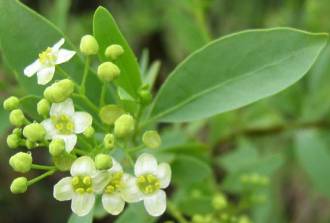
Description
Description
The family Montiniaceae comprises 3 genera, namely, Montinia, Grevea and Kaliphora. Only the monotypic genus (a genus with only 1 species) Montinia occurs in the western part of southern Africa and southwestern Angola. The description to follow applies only to this genus.
The species, M. caryophyllacea, is a lax shrub or small tree. The pale green leaves are simple, alternate or crowded on abbreviated branchlets and have petioles. The leaf blade varies from elliptic to narrowly obovate, has a cuneate base, acute to rounded apex and entire margins. Male flowers are borne in few-flowered, terminal clusters, have a tubular calyx with 4 short lobes, 4 free, white petals and 4 stamens alternating with the petals, inserted below a fleshy disc. The female flowers are solitary or borne in clusters of 2 or 3 in terminal leaf axils. Female flowers are characterised by an inferior, ovoid to elongate and fusiform ovary with 4 short calyx lobes and 4 creamy white petals inserted below a fleshy disc at the apex of the ovary; in the middle of the disc is a stout style with a bifid stigma.

The fruit is a woody, ovoid capsule, crowned with the persistent calyx lobes, disc and style.
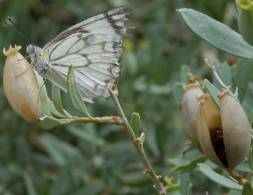
Conservation Status
Status
Montinia is currently not regarded as threatened.
Distribution and habitat
Distribution description
Montiniaceae is a family of 3 genera and 5 species. Montinia occurs in southwestern Angola, Namibia, Botswana and the Northern, Western and Eastern Cape Provinces of South Africa. It grows in dry summer rainfall conditions but is also known from more humid, winter rainfall areas. Specimens are found against hill slopes, between rocky outcrops and along dry rivers on a variety of substrates. Grevea is represented by 3 species: G. madagascariensis in the dry, deciduous forests of Madagascar, G. eggelingii, usually in riverine thickets in southeastern Kenya, southeastern Tanzania and northeastern Mozambique, and G. bosseri occurs in forest in western Congo. The genus has recently also been discovered in Ghana. Kaliphora madagascariensis grows in subhumid to montane, evergreen forest in Madagascar.
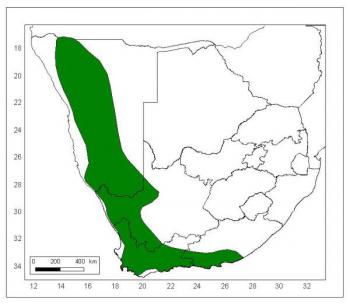
Derivation of name and historical aspects
History
The genus Montinia was described by Thunberg in 1777 from material he collected in the Cape. He named it in honour of Dr Laurence Montin, who was a pupil of Linnaeus. Thunberg used the specific epithet `caryophyllacea' on account of the resemblance of the female flowers to cloves. M. caryophyllacea is known as the wild clove bush. The systematic position of the Montiniaceae and its genera has been a matter of controversy ever since Montinia was established. The 3 genera were assigned to various families, including Onagraceae, Oliniaceae and Grossulariaceae. However, a comparison of morphological and anatomical characters shows a high similarity with members of the family Escalloniaceae. There is little support for a relationship with members of the order Solanales, indicated by molecular data.
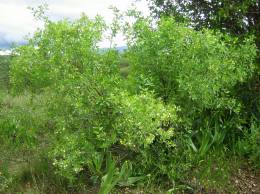
Ecology
Ecology
The woody fruit of Montinia releases winged, membranous seeds. Dispersal is by wind.
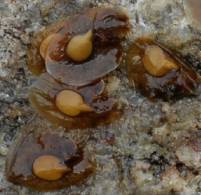
Uses
Use
The crushed leaves of M. caryophyllacea have an acrid, pungent scent and the sap of the plant is milky. Plants of the species are browsed by game and livestock and the fruit is eaten by armoured ground crickets. The pungent leaves of Grevea are used to soothe colds and headaches.
Growing Family: Montiniaceae
Grow
In the Garden Montinia caryophyllacea is not known in cultivation.
References
- Brummitt, R.K. 2007. Montiniaceae. In V.H. Heywood, R.K. Brummitt, A. Culham & O. Seberg, Flowering plant families of the world. Royal Botanic Gardens, Kew.
- Coates Palgrave, M. 2002. Montinia. Keith Coates Palgrave Trees of southern Africa, edn 3. Struik, Cape Town.
- Curtis, B.A. & Mannheimer, C.A. 2005. Montiniaceae. Tree atlas of Namibia. The National Botanical Research Institute, Windhoek.
- Mannheimer, C.A. & Curtis, B.A. (eds). 2009. Le Roux and Müller's field guide to the trees and shrubs of Namibia. Macmillan, Windhoek.
- Mendes, E.J. 1987. Montiniaceae. Flora zambesiaca 4: 54-57.
- Ronse-Decraene, L.P., Linder, H.P. & Smets E.F. 2000. The questionable relationship of Montinia (Montiniaceae): evidence from a floral ontogenetic and anatomical study. American Journal of Botany 87: 1408-1424.
- Thunberg, C.P. 1777. Montinia. Physiographiska Saelskapets Handlingar 1: 108,109.
Credits
Elizabeth Retief
National Herbarium, Pretoria
October 2010
Plant Attributes:
Plant Type:
SA Distribution:
Soil type:
Flowering season:
PH:
Flower colour:
Aspect:
Gardening skill:
Special Features:
Horticultural zones






Rate this article
Article well written and informative
Rate this plant
Is this an interesting plant?
Login to add your Comment
Back to topNot registered yet? Click here to register.